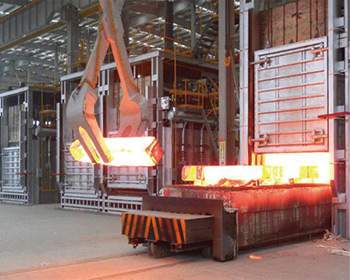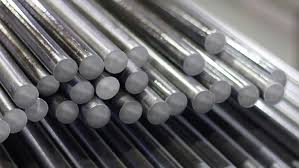
Understanding Q235 Chemical Composition: A Complete Guide
Table of Contents
Introduction

Q235 steel, known for its versatility and reliability, is a low carbon steel that has become a staple in construction, manufacturing, and other industries. The Q235 chemical composition is a key factor in understanding the material’s performance and its ability to meet specific requirements. This guide will explore the intricacies of the Q235 chemical composition and its implications for steel users.
Understanding Q235 Steel
To fully appreciate the importance of the Q235 chemical composition, it’s essential to understand what Q235 steel is and how it’s classified.
What is Q235 Steel?
Q235 steel is a low carbon steel grade with a nominal carbon content of approximately 0.14 to 0.22%. It is classified as a mild steel due to its low carbon content, which gives it excellent formability and weldability. The “Q” in Q235 stands for “quickness,” referring to the steel’s ability to deform quickly under load without breaking.
Key Elements in Q235 Chemical Composition
The chemical composition of Q235 steel is carefully controlled to achieve the desired balance of properties. The main elements in Q235 include:
- Carbon (C): The primary hardening element, with a content range that affects the steel’s strength and ductility.
- Manganese (Mn): Added to improve strength and hardenability without making the steel brittle.
- Silicon (Si): A deoxidizer that also improves the steel’s strength.
- Phosphorus (P): Generally considered an impurity, but present in small amounts to control the steel’s grain structure.
- Sulfur (S): Another impurity that can be present in small amounts, affecting the steel’s machinability.
The Impact of Q235 Chemical Composition on Properties
The chemical composition of Q235 steel directly influences its mechanical properties, making it suitable for a wide range of applications.
Tensile Strength and Yield Strength
The balance of carbon and other elements in Q235 steel contributes to its tensile strength and yield strength, which are critical for withstanding various loads and stresses.
Weldability and Formability
The low carbon content in Q235 steel makes it highly weldable and formable, allowing it to be easily shaped and joined in fabrication processes.
Corrosion Resistance
While Q235 steel does not have inherent corrosion resistance, its chemical composition can be modified with coatings or treatments to improve its resistance to rust and corrosion.
Applications of Q235 Steel
Understanding the Q235 chemical composition helps in selecting the steel for specific applications where its properties are most beneficial.
Construction
Q235 steel is used in construction for reinforcing bars, beams, and structural components due to its strength and formability.
Automotive Industry
In the automotive industry, Q235 steel is used for body panels, frames, and other components that require a combination of strength and ductility.
Agricultural Equipment
For agricultural equipment, Q235 steel provides the durability and resistance to wear needed for heavy-duty machinery and tools.
Manufacturing and Fabrication
In manufacturing, Q235 steel is used for a variety of products, from pipes and tubes to containers and machinery parts, thanks to its ease of fabrication and processing.
A Comparative Analysis of Q235 Chemical Composition
To provide a clearer picture of the Q235 chemical composition, here’s a comparative analysis of the key elements and their concentrations:
Q235 Chemical Composition Table
| Element | Typical Range (%) | Impact on Properties |
|---|---|---|
| Carbon (C) | 0.14-0.22 | Determines hardness and strength |
| Manganese (Mn) | 0.30-0.65 | Improves strength and hardenability |
| Silicon (Si) | 0.10-0.30 | Enhances strength and deoxidizes |
| Phosphorus (P) | ≤0.045 | Controls grain structure |
| Sulfur (S) | ≤0.045 | Affects machinability |
This table provides a snapshot of the typical ranges for key elements in the Q235 chemical composition and how they contribute to the steel’s properties.
Making the Right Material Choice

When selecting Q235 steel for a project, consider the specific requirements and constraints.
Project Requirements
Consider the specific requirements of your project, such as the type of loads the steel will need to support, the available space, and the desired aesthetics.
Budget Constraints
Q235 steel offers a cost-effective solution for many applications due to its balance of properties and relatively low cost.
Long-Term Performance
Think about the long-term performance of the steel, including its resistance to corrosion, its maintenance requirements, and its expected service life.
Sustainability
Consider the environmental impact of the steel production process and the overall sustainability of your project.
Conclusion
Understanding the Q235 chemical composition is crucial for engineers, architects, and contractors to make informed decisions about material selection. The Q235 chemical composition directly influences the steel’s properties, making it suitable for a wide range of applications. By considering factors such as tensile strength, weldability, and corrosion resistance, you can select Q235 steel that will enhance the efficiency, safety, and sustainability of your projects.
FAQ
Q: What are the main elements in the Q235 chemical composition?
A: The main elements in Q235 chemical composition include carbon, manganese, silicon, phosphorus, and sulfur.
Q: How does the Q235 chemical composition affect its properties?
A: The Q235 chemical composition affects properties such as tensile strength, yield strength, weldability, formability, and corrosion resistance.
Q: Can Q235 steel be used in outdoor applications where corrosion resistance is important?
A: While Q235 steel does not have inherent corrosion resistance, it can be coated or treated to provide protection against rust, making it suitable for outdoor use.
Q: Is Q235 steel difficult to weld?
A: No, Q235 steel is relatively easy to weld due to its low carbon content, which contributes to its good weldability.
Q: What are the typical applications of Q235 steel in the construction industry?
A: In the construction industry, Q235 steel is used for reinforcing bars, beams, and structural components where a balance of strength and ductility is required.






